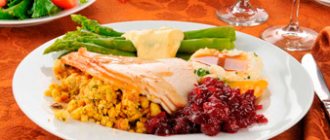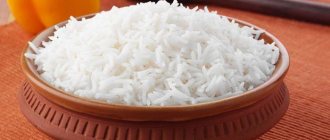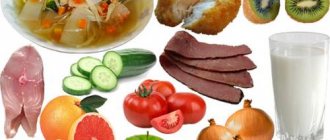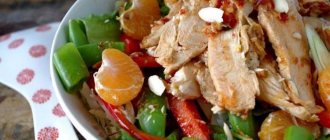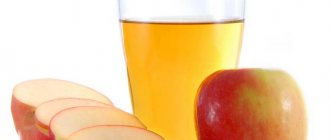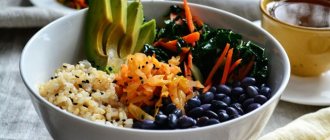The most effective and popular in the treatment of obesity and simply for getting rid of excess weight is considered a low-calorie diet (LCD). It would seem that it could be simpler: they reduced the daily calorie intake, forced the body to use up fat reserves, and all that remains is to wait for the result. This is where the surprises begin: either the weight stays or even increases, then hungry fainting occurs, then muscle mass disappears instead of fat. The thing is that such a food system requires a special approach and competent organization.
Necessary educational program
90% of all available diets are low-calorie, and this is scientifically explained. To force the body to use up its own fat reserves, you need to create an energy deficit. This can only be done by reducing daily calorie intake. For this purpose, some nutritional systems propose to minimize or completely remove carbohydrates from the diet, others - fats, and others are based on a specific category of products (vegetable, protein).
Everyone is free to choose how many calories to reduce their daily intake. Most diets suggest 1,200 for women and 1,500 for men. However, you should not blindly follow these patterns. If your goal is effective weight loss without harm to health, consider a few points.
Daily calorie content
Let's assume that two women chose the same low-calorie diet with a daily intake of 1,200 kcal. One of them is a 20-year-old student, an activist, constantly on the move, involved in fitness, gained 5 extra pounds during an illness while on bed rest and wants to get back into shape. The other is a 45-year-old department head who leads a sedentary lifestyle, has her own driver, and is constantly struggling with excess weight, which by this time has accumulated at least 15, or even 20 kg.
In the first case, a low-calorie diet with a daily allowance of 1,200 kcal will allow a girl to lose her 5 kg in just a week, well, in a maximum of 2. In the second, the results can be disastrous: by the end of the month the minus can be 4-5 kg (or, alternatively, weight in general will rise) + hypertension and other side effects with constant deterioration in health.
Conclusion. Whatever diet you choose, the daily caloric intake should be determined in accordance with your individual parameters: age, BMI, height, physical activity. But do not blindly take the approximate figures that are offered in the descriptions of the documentation.
How to reduce calories
There are special formulas for calculating daily caloric intake. You will need two numbers: the first will show how many kcal you need to consume daily in normal life, the second - for weight loss. The corridor (the difference between them) can range from 300 to 1,500 kcal. And here 90% of those losing weight make a total mistake: starting tomorrow (Monday, the 1st) they went on a diet. Before this, they consumed 2,500 kcal, and now - 1,200.
The body will be in a state of shock. He will not be able to adapt to a new caloric intake so quickly. The result is a deterioration in health up to fainting and a sharp decrease in performance. As for weight, in the first 3-4 days the minus can be significant, but only due to the removal of toxins and excess fluid. But then the scenario disappoints many: the decline will be catastrophically low, or may stop altogether (the so-called plateau effect). An even more unpleasant moment is when weight loss occurs, but fat deposits do not go away, because instead of them proteins, which are vital for the body, begin to be consumed. As a result, the figure leaves much to be desired, and the state of health becomes worse and worse every day.
Conclusion. You need to prepare your body for the upcoming weight loss. Every day, reduce your daily caloric intake by 150-200 kcal until you reach the minimum value that suits you (calculated using the formula). For those with a corridor of 300 kcal, entry will take only 2 days, for those with 1,500 - 10, but believe me: it’s worth it. As a result, the weight will be lost evenly and without harm to health.
And then organize your way out of the diet in exactly the same way: gradually increasing your daily caloric intake by 150-200 kcal until you reach your norm.
Weight retention
Studies have shown that in long-term follow-up of patients on a very low-calorie diet , weight loss is often regained. Combining a very low-calorie diet with behavioral therapy and physical activity can help both weight loss and slow weight gain. For long-term results, however, a very low-calorie diet is as effective as more moderate dietary restrictions. obese people , it is necessary to maintain weight throughout their lives, even after formal treatment has ended. Moreover, doctors recommend that obese maintain a healthy diet, regular physical activity, and improve their knowledge of healthy eating.
Do you want to lose weight?
Make an appointment with a nutritionist right now! Make an appointment
Mechanism of weight loss
The easiest way to lose weight is on a low-calorie diet. This explains its popularity. Its goal is to make a person spend more calories per day than he receives. To achieve this, physical activity increases and the daily diet decreases. By creating an energy deficit, you force the body to use up its own reserves. It can use either fats or proteins. The latter option should not be allowed, since this is muscle and connective tissue that performs important functions. To protect them from breakdown, your diet should have enough protein foods and you need to constantly exercise.
However, keep in mind that the fat burning process is quite long and will not begin immediately. The body needs to adapt to new living conditions and only then, as a result of improving overall metabolism, lipolysis will accelerate. In the first days, weight loss occurs due to other processes. The work of the stomach is facilitated (less food comes in, it is healthy), and it is freed from the “garbage” accumulated in it.
This in turn leads to blood purification - the access of oxygen to tissues increases, and it is known as a catalyst for fat burning. The functioning of the liver and kidneys improves, which will allow you to get rid of excess fluid that forms swelling.
A low-calorie diet triggers all these processes in the body, and they, in turn, lead to weight loss. The number of kilograms lost will depend on two indicators: by how much the daily ration will be reduced and on the duration of fasting. On average, if you sit on 1,200 kcal for one week while simultaneously increasing physical activity, you can lose 4-5 kg. But keep in mind that the pace may decrease further, since the body will have to lose weight not by removing harmful substances and excess water, but by burning fat, and this is a rather difficult and slow process.
Contraindications
Contraindications for each low-calorie diet will be specific. For example, people with kidney disease should not choose a protein diet, and a carbohydrate-free diet is not suitable for those whose work involves intellectual activity. Therefore, look at this item in the power system that you have chosen.
However, there is a general list that nutritionists have compiled for all NDCs that offer a reduction in daily caloric intake to 1,200 kcal and below:
- diseases of the kidneys, liver, heart, gastrointestinal tract;
- pregnancy, lactation;
- diabetes;
- cholecystitis;
- infections;
- weak immunity;
- gallstones;
- bronchial asthma;
- alcoholism;
- hypertension and hypotension;
- tendency to constipation;
- oncology;
- rehabilitation after a heart attack or stroke;
- age up to 16 and after 65 years.
Before losing weight, you should undergo a medical examination and, based on its results, consult a doctor. You need to tell him what nutrition system you have chosen and how many calories you plan to reduce your daily diet. Based on this data, he will make recommendations that should be followed.
Options
Depending on the timing:
- short-term: for 3 or 5 days;
- average duration: 7, 10, 14, 21 days;
- The longest low-calorie diet is 1 month (doctors do not recommend losing weight on such an energy-deficient diet for longer than this period).
If you need to lose 3-4 kg, a short-term option is suitable. To lose weight by 5-9 kg, choose a medium-long diet. If your excess weight is 10 kg or more, you will have to be on a low-calorie diet for a month.
Depending on complexity:
- gentle (light, simple): reducing the daily intake by 300-500 kcal (on average, caloric intake will be about 1,800 kcal);
- medium difficulty: reduction by 600-800 kcal (1,500 kcal);
- hard (strict): reduction by 900 kcal or more (less than 1,200 kcal);
- An emergency low-calorie diet involves maintaining a daily caloric intake of 400-500 kcal for a short period of time (3-5 days).
The safest ones are gentle and medium difficulty. But in the first case, the results will be minimal. Therefore, nutritionists recommend nutritional systems with a daily calorie content of about 1,500 kcal. As this indicator decreases, health risks will proportionally increase.
Depending on the diet:
- high protein/protein;
- no-carb/low-carb;
- fat free/low fat;
- vegetarian/lenten;
- drinking.
The best low-calorie diets
Rating
- Northern.
- South.
- ABC.
- Protein.
- Model.
- Drinking.
- Japanese.
- Maggi.
- Protasov's diet.
- Malysheva's diet.
Review of the most popular
North and South
Two diametrically opposed diets have recently gained great popularity - Mediterranean (southern) and Scandinavian (northern, Nordic, Norwegian). However, they have many common points: they are based on a healthy diet and are low-calorie. If your goal is to lose weight without harming your health, choose them.
Basic principles:
- reducing calories to a safe level (1,400-1,600);
- limiting animal fats, salt and spices;
- emphasis on seasonal fruits and vegetables characteristic of a particular region;
- all dishes are prepared at home;
- giving up trans fats and fast food.
The basis of the diet on the Mediterranean diet is fruits and seafood (for lists of products, menus, recommendations, see. If you lose weight according to the Scandinavian method, the menu includes berries, reindeer meat and fish, which is found mainly in northern waters.
Protein
A low-calorie protein diet is good because, when simultaneously exercising, it prevents the breakdown of muscle fibers (protein is a building material for them). This forces the body to burn fat deposits. Has many options. It can be an emergency three-day and a month long. The daily calorie level ranges from 800 kcal to 1,800. The basis of the diet with a minimum of carbohydrates and fats is:
- chicken or turkey breast;
- egg white;
- mushrooms, nuts and legumes, if we talk about vegetable protein;
- all dairy products with a low fat percentage: cottage cheese, milk, kefir, hard cheese, yogurt, natural yogurt.
Good results can be achieved with a low-calorie dairy diet, which is also a protein diet. It involves active consumption of milk during the day (500-600 ml) while limiting other products.
ABC
This is the lowest calorie diet. Originally developed for training American military personnel. ABC is the short name for the military camp where this system was practiced: Aha Boot Camp. The daily calorie content on different days varies from 0 to 850 kcal, but does not rise higher. Scientists were involved in calculating these indicators, so there is no accident in them. For example, this is what the first week’s meal plan looks like:
These numbers are gradually decreasing every week. Two diet options were introduced for a period of 30 and 50 days. The latter was the most extreme and was not followed by everyone. At the same time, military personnel had to actively engage in sports, and the diet was predominantly protein.
Despite warnings from nutritionists and doctors that the ABC diet is an extreme way to lose weight and is not intended to be followed at home, many people practice it. Of course, few people can withstand 30 or even more so 50 days on such a diet, but 3, 5 and 7-day options give good results. True, with a lot of side effects and complications.
Low calorie protein diet
Proteins are the main “building block” of muscle mass in the human body. A low-calorie protein diet should lead to rapid weight loss without starvation, with a decrease in cravings for sweets and blood sugar levels.
When losing weight, it is important to be careful with fruit consumption. They're full of sugar, so it's best to limit yourself to one fruit per day. Cheese and nuts contain a lot of fat, so their quantity is also kept to a minimum.
Weekly menu of a low-calorie protein diet:
Mon:
- Breakfast: scrambled eggs with onions, bran.
- Lunch: chicken breast with light sauce.
- Snack: yogurt.
- Dinner: fish.
Tue:
- Breakfast: oat bran with fish.
- Lunch: salad with egg.
- Snack: 50 g cheese.
- Dinner: turkey with yogurt sauce.
Wed:
- Breakfast: oat bran with yogurt.
- Lunch: trout with mustard sauce.
- Snack: 100 g cheese.
- Dinner: chicken leg, vegetables.
Thu:
- Breakfast: omelet.
- Lunch: chicken curry.
- Snack: vegetable salad.
- Dinner: fish soup.
Fri:
- Breakfast: cottage cheese.
- Lunch: fish with greens.
- Snack: chicken leg.
- Dinner: beef.
Sat:
- Breakfast: scrambled eggs.
- Lunch: chicken breast.
- Snack: yogurt.
- Dinner: chicken cutlets without breading.
Sun:
- Breakfast: yogurt with oat bran.
- Lunch: fish.
- Snack: cottage cheese.
- Dinner: skinless chicken.
The menu includes oat bran. They contain a lot of fiber, which is important even on a protein diet. Another feature is to choose cottage cheese with a low percentage of fat, not low-fat.
Basic principles
Any low-calorie diet requires compliance with a number of general rules, without which it may be ineffective.
- Fractional meals.
- Dinner - 3 hours before bedtime.
- Prohibited methods of cooking: frying, salting, marinating.
- The basis of the diet is proteins, a minimum of fats, mainly of plant origin, and some complex carbohydrates.
- Entry and exit should be gradual, with a gradual decrease and, accordingly, increase in the daily calorie intake.
- Drink 1.5-2 liters of regular water per day.
- Sports activities are required. Strength loads in them should be at least 30% (for women) and 50% (for men) of the entire program, provided there is a sufficient amount of protein in the diet.
The main rule: with a low-calorie diet, you must lead a healthy lifestyle, otherwise side effects and deterioration in well-being cannot be avoided. Adequate sleep, fresh air, a clear daily routine, a schedule of alternating work and rest, a minimum of worries - all these are necessary components of this nutrition system.
Smoking and alcohol are incompatible with it. If there is an excess of nicotine against the background of insufficient daily calorie intake, intoxication of the body can occur, which will have to be treated in a hospital setting.
Questions and answers
How to properly organize the entrance?
Suppose you need 2,400 kcal per day for normal functioning of the body, and 1,500 for weight loss (calculated using formulas taking into account individual parameters). The difference is 900 kcal. Login will take 6 days if you reduce your caloric intake by 150 kcal daily. This can be done by eliminating harmful foods from the diet (one or two every day) and limiting portions (by 50-60 g for each meal daily).
How to get out?
If you organize the entrance correctly, exiting the low-calorie diet will be problem-free, since it will completely mirror it. In 6 days you need to overcome the corridor of 900 kcal (if we take the figures given in the example above as a basis - 2,400 and 1,500 kcal). To do this daily:
- increase daily caloric intake by 150 kcal;
- we include in the diet 1-2 products from the list of prohibited, but least harmful: these can be fatty fish, meat, dairy, high-calorie fruits and vegetables;
- increase the serving size by 50-60 g at each meal.
Why does weight gain?
Unfortunately, this problem is quite relevant. There may be several reasons, and only after eliminating them can you get rid of this unpleasant phenomenon.
- Reason 1
With the occurrence of energy deficiency, the body switches the functioning of organs to a special mode when metabolism is inhibited. This reduces the rate of both lipolysis and fat burning. Slow metabolism is the main provocateur of weight gain.
How to eliminate it: include in your diet foods that speed up metabolism, drink special medications or use folk remedies, choose a different diet, review your training program.
- Reason 2
With intense training and a protein diet, an increase in muscle mass is observed, which is much heavier than fat tissue. This is what leads to weight gain.
How to eliminate: reduce the intensity of training, limit strength training, reduce protein intake. If you want a beautiful, sculpted figure and you do not plan to slow down the growth of muscle mass, just wait for the burning of the main fat tissue by choosing a long-term diet option.
Weight can also be gained due to swelling (if, for example, the drinking option is chosen or the basis of the diet is watermelon), taking medications (hormonal contraceptives, glucocorticosteroids), and the development of certain diseases. Solving this problem in each individual case must be approached individually.
What side effects should I expect?
If you have chosen a diet with a daily caloric content of at least 1,500 kcal and entered it correctly, in the absence of contraindications, usually no unpleasant sensations arise. Otherwise, you will have to deal with side effects such as:
- lethargy, decreased performance;
- irritability;
- insomnia;
- muscle spasms and pain;
- dizziness, headaches;
- pressure surges;
- nausea, pain in the stomach;
- problems with stool.
How to deal with side effects?
If the main side effects (lethargy, irritability, poor health) are pronounced and reduce the quality of life, slightly increase the daily calorie intake by introducing carbohydrates into breakfast. Start your day with oatmeal, allow yourself to eat a bun or donut, add a teaspoon of sugar or honey to your coffee. It is better to make such concessions than to break off the diet ahead of time and never achieve results.
Sometimes on low-calorie diets, quite severe muscle pain occurs. It can be caused by two factors: either they are too intensively broken down instead of adipose tissue (with a lack of physical activity and a too low-calorie diet), or it is a sore throat (with intense exercise, if before that they led a predominantly sedentary lifestyle). In the first case, you need to increase both physical activity and the level of daily caloric intake. In the second, endure it; this pain is temporary and should pass soon. If this does not happen, you may have chosen the wrong training program, consult a trainer.
If you are constipated, there are many low-calorie laxatives that can help relieve the problem. You can drink a glass of kefir or 100 ml of fresh beet juice in the evening - they will not disrupt your diet, but if you use them regularly in the morning, you will be able to go to the toilet normally. If they do not help, this may be due to more serious disorders of intestinal motility, in which case contact a gastroenterologist or therapist.
Physical exercise and subcalorie diet to combat obesity
Any physical activity increases the release of adrenaline and norepinephrine from the adrenal medulla. These hormones activate metabolism. As a result, vitality increases and a positive emotional mood appears.
Slow, long running is very useful for controlling excess weight. It has a positive effect on the human hormonal system. According to the head of the scientific advisory department of the Institute of Experimental Endocrinology and Hormone Chemistry, running is an active assistant in the fight against obesity.
Nowadays, overweight patients are increasingly coming to endocrinologists. Among them, unfortunately, there are many teenagers with the so-called constitutional exogenous form of obesity. This is a result of overfeeding and lack of exercise during adolescence. Parents apparently do not understand that they cannot feed their children abundantly without giving them appropriate physical activity. Nowadays, there is an imbalance between the consumption and receipt of energy resources.
It can probably be eliminated in one way - to instill in people the idea of the need to move more, to raise the culture of parents, especially grandmothers, who like to overfeed their grandchildren. It is high time to create conditions in every yard so that children and adolescents can actively engage in physical education.
For patients suffering from excess weight, doctors prescribe active physical therapy and a so-called subcalorie diet, sometimes even resorting to drugs that reduce appetite.
Those receiving outpatient treatment are given the following recommendations: mandatory morning exercises, a half-hour walk in the afternoon, daily evening walking for about an hour and a half.
A subcalorie diet involves the complete exclusion of easily digestible carbohydrates from the diet - bread, sweets, cakes, and a transition to protein-vegetable foods, and with fractional intake - 4-5 times a day.
Here is a sample list of foods that you can eat during the day to get 1500 or 1800 kilocalories.
1500 kilocalories:
| 1800 kilocalories:
|
Many people, in order to lose weight, go on a buckwheat diet for weight loss, or even resort to fasting. But, in my opinion, as, indeed, in the opinion of most experts, this harsh measure is non-physiological, that is, it does not correspond to the physiological needs of the body. We need a balanced exchange between calorie intake and expenditure.
The trouble is that among people suffering from obesity, many suffer from diabetes. Obesity contributes to the development of pancreatic insufficiency. Excess weight requires the body to increase the production of insulin, which leads to depletion of the hormonal apparatus of the pancreas. And this is the basis for the occurrence of diabetes.
Unfortunately, diabetes is now a very common disease in the world. In highly developed countries, the number of patients is constantly growing. The highest percentage is observed in the USA. In developing countries, this disease is much less common. Statistics show that about 2.5% of our population has diabetes. Moreover, we are talking only about the identified forms. The main reason, I emphasize, is physical inactivity and excessive nutrition.
The Institute of Nutrition of the Academy of Medical Sciences conducted a study of 28 thousand people aged 17 to 80 years. It turned out that 50% of them were overweight, and 26% were obese. And again, physical inactivity and excess nutrition are named among the main causes of obesity and obesity.
This is especially true for women aged 30 to 35 years. Despite the fact that women participate in all spheres of social life and bear a heavy burden at work and at home, many of them are overweight.
The fact is that the bustle of the house cannot replace physical education and running, in particular. In addition, women tend to eat foods containing large amounts of carbohydrates. Hence the weight gain, loss of grace and mobility. We have already noted that many, in search of a way out, rush to extremes, turn to fasting and other dubious recommendations.
At one time, it was widely written about the miraculous properties of sprouted grains. The Institute of Nutrition conducted special research, and it turned out that sprouted grains do not have any special properties.
I will emphasize again and again: it is necessary to differentiate the diet based on age, gender, profession, nature of work, climatic conditions, but in any case, nutrition should be varied and meet the physiological needs of a person. On average, he needs: proteins - 80-90 g, fats - 90-150 g, carbohydrates - 400 g with a total caloric intake of 2600-3400 kilocalories.
Product Lists
Each individual low-calorie diet prescribes what can be eaten in accordance with its principles and what cannot be eaten. If you take the classic version, you can create lists of permitted and prohibited products yourself. The first contains the most low-calorie and healthy ones, the second - the most high-calorie and harmful. Approximate options may be as follows.
Allowed:
- chicken fillet, meat by-products (kidneys and heart);
- lean fish, seafood;
- low-fat dairy products: milk, kefir, cottage cheese, natural yogurt;
- vegetables;
- fruits (mainly citrus fruits);
- all berries;
- any greens;
- all mushrooms;
- grains - limited;
- Drinks include green tea, freshly squeezed juices without added sugar, infusions and herbal decoctions.
Prohibited:
- fatty meat: pork, lamb, duck, goose;
- sausage;
- fatty fish: salmon, eel, as well as any canned food in oil;
- soft cheeses, dairy products with a high percentage of fat, cream, sour cream, fermented baked milk;
- dried fruits;
- nuts;
- flour and pasta products;
- sweets;
- sauces such as ketchup and mayonnaise;
- store-bought juices, soda, alcohol, energy drinks.
The lists of permitted and prohibited foods for each individual diet may be different.
Kremlin diet
The Kremlin diet for a month is considered one of the most effective for losing weight at home. During this time, you can lose 7-10 kg without harm to your health.
The program is based on limiting carbohydrate intake. As a result, if the body does not receive energy from food, it will begin to use fat reserves. Basic rules of the Kremlin diet:
- Available at any time.
- Strictly limit the amount of carbohydrates - give preference to protein foods.
- Do a fasting day once a week.
- Allow moderate physical activity.
The following products are prohibited:
- sweet fruits, including dried fruits, bananas;
- sugar, sweet cereals, confectionery;
- any sweet and carbonated drinks, beer;
- pasta, potatoes;
- dairy products;
- mayonnaise, ketchup and other sauces with starch and sugar.
As for the menu, it is recommended to prepare it in advance for each week. It must be varied so that the body receives the necessary nutritional and beneficial components:
| Time of receipt | Options |
| Breakfast |
You can wash it down with a cup of tea or coffee, juice |
| Dinner |
|
| Dinner |
|
Any unsweetened fruit, 10 olives or 5 nuts are suitable for a snack.
The advantages of the Kremlin diet include the fact that it gives high results and is affordable. At the same time, the menu is varied and nutritious. The feeling of hunger does not torment. It is possible to build muscle mass if you add physical activity. Thanks to the diet, metabolism is normalized and overall well-being improves. The disadvantages include the necessary daily control of carbohydrates (calculation of conventional units), increased load on the urinary system.
Menu for the week and month
The daily menu for a low-calorie diet is compiled taking into account the chosen option. The following is formulated for a diet with a daily caloric intake of 1,500 kcal (optimal option), in compliance with the basic principles of proper nutrition:
Making a menu for a month for every day is much more difficult. You can simply repeat the weekly diet so as not to count your daily caloric intake again. Or use this tough option, which involves 1,200 kcal:
How to create a low-calorie menu for every day
Well, enough to upset you, let me outline the basic rules, following which you can be guaranteed to get results:
- You definitely need to purchase a digital grocery scale. Food must be weighed. Determining the weight “by eye”, the result you will get is also very average.
- You need to decide on the foods that you will eat on a low-calorie diet. Unsystematic eating will definitely not help you lose weight. Only certain products in certain quantities. It is enough to select 10-15 products from different categories.
- The method of preparing food should not change. Boiled and fried eggs, for example, have different caloric content. You can’t cook eggs differently every time and count the same calories.
- You need to get food containers and prepare food the night before. Because now you will only eat what you prepared and took with you. No fast food or tea parties with cakes.
- The scales on which you will weigh yourself must be electronic. Conventional scales have an error of +/- 200 grams and it is quite difficult to track your progress on them. You only need to weigh yourself at one selected time. It's best in the morning after using the toilet. Weight during the day can change up to one and a half kilograms, so weighing 5-6 times a day will bring nothing but disappointment.
How to count the calorie content of dishes
So, we’ve decided on the main thing, let’s choose the products.
It’s best to take a rational approach here. That is, choose foods that, in large portions, have lower calorie content. Here's an example offhand: 100 grams of boiled buckwheat has a calorie content of 103 kcal/100g. And chocolates - 570 kcal/100g. If we assume that our daily requirement is 800 kcal, then we can afford to eat either 800 grams of buckwheat or 130 grams of chocolates per day. What product is better to choose so as not to starve during the day? Of course, boiled buckwheat would be a much more logical choice. Not as tasty, but correct.
Somewhere on the site I have a large table of caloric content of foods, with the help of which you can create your own extensive diet, but believe me, it is better to limit yourself to a small list. Why? I’ll explain later when we get to controlling daily calories.
In the meantime, here are those foods whose consumption is guaranteed to supply your body with everything it needs and minimize the feeling of hunger on a diet
Grocery list
boiled buckwheat (103 kcal/100g)- boiled rice (116 kcal/100g)
- boiled eggs (157 kcal/100g)
- cottage cheese 2% fat (96 kcal/100g)
- kefir 2% fat (56 kcal/100g)
- 2% natural yogurt (60 kcal/100g)
- sour cream 20% fat (206 kcal/100g)
- boiled chicken fillet (110 kcal/100g)
- boiled beef (254 kcal/100g)
- tomato (18 kcal/100g)
- cucumber (16 kcal/100g)
- carrots (41 kcal/100g)
- apple (46 kcal/100g)
As you can see, a low-calorie diet is a very small selection of foods. And note, like on any other diet, the menu completely excludes confectionery and bakery products. The reason is simple - they are very high in calories. For example, the calorie content of a loaf is 260 kcal/100g. One piece weighs about 30 grams and contains about 80 kcal. Agree, it’s too much for a diet.
Honestly, most of you can easily start losing weight simply by giving up flour. And you should start testing your body’s strength with diets only when a simple transition to proper nutrition stops working.
In addition, everything fried has been removed from the diet (the reason is the same - saving calories) and there is only one method of preparation - boiling. For both meat products and grains (still want to try this diet?)
Daily menu for 1200 kcal
Then everything is simple. If you need to eat 1200 kcal a day, then you sit down in the evening and figure out what and from what products you need to cook in order to stay within the limits.
Remember, the diet should contain both cereals and meat with vegetables. Therefore, here is what you can get approximately for 1200 kcal:
Breakfast 7:00
Boiled buckwheat 200 gr (206 kcal)
Snack 10:00
Cottage cheese 2% 200 g, seasoned with natural yoghurt 100 g (252 kcal)
Lunch 13:00
Boiled rice 200 g with boiled chicken 100 g (342 kcal)
Afternoon snack 16:00
Apple 100 gr (46 kcal)
Dinner 18:00
Boiled beef 100 gr (254 kcal)
Cucumber and tomato salad 150 g with 30 g sour cream (96 kcal)
The total was 1196 kilocalories. It is not necessary to display numbers to exact values. Plus or minus 10 kilocalories is not a critical error.
The timing of meals and their quantity do not matter and are given only as an example. I literally recently wrote a separate article about how many times a day you should eat and at what time.
As you can see, creating a menu for the day is not that difficult. It is much more difficult to strictly adhere to it. But I’ll talk about this a little later, and now let’s talk about how to choose your own calorie intake for weight loss.
